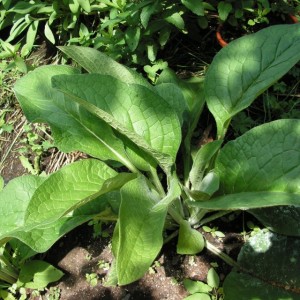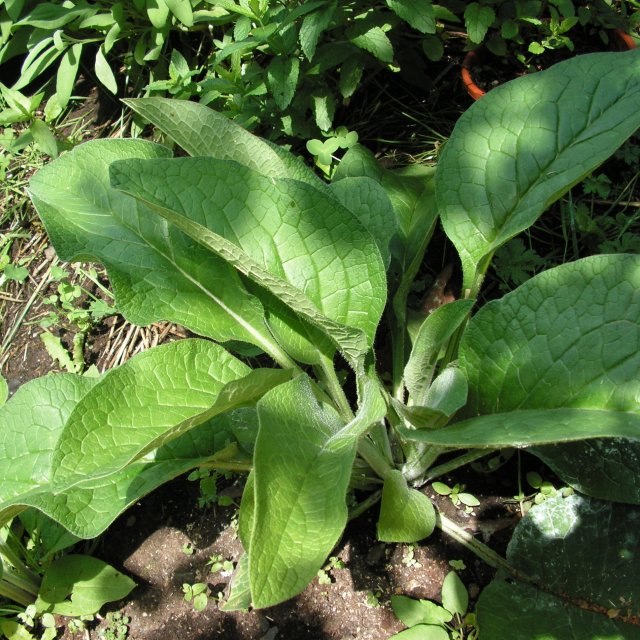 Comfrey is another all-around prodigious benefactor in the vegetable garden with many uses.
Comfrey is another all-around prodigious benefactor in the vegetable garden with many uses.
Large and imposing, it requires space to do its thing where you intend for it to stay; because once comfrey is established it is not going anywhere.
Comfrey is a a deep miner with a tap root up to ten feet in length. It uses its root to draw up nutrient minerals from the depths and deposits them in leaves for harvesting through compost, chicken and livestock feed or as a mulch in the garden.
The other remarkable quality of comfrey is that it will grow in poorly draining soils and has the ability to transform and clean stagnant water sources.
Mineral Rich Mulch and Compost
One of comfrey’s best uses is as mulch or in compost. Add comfrey leaves to compost to activate the composting process and add nutrients to the compost for the micro-organisms who thrive on nutrient dense compost.
Plant it on the borders of cabbage, broccoli and brassica family plants susceptible to slug and snail damage as a trap to capture the varmints before they make it to the precious garden beds holding your bounty.
Common comfrey is a prolific spreader, so it is best to leave it outside the garden, although it is a fine addition to the larger landscape, use Russian or particularly the “Bocking 14” cultivar to grow a contained and noninvasive variety in the garden.
Comfrey leaves can also be cut and spread as mulch in the garden to add calcium, potassium and magnesium as well as vitamins A, C and B12 and trace minerals to the garden soil. When added to compost these minerals and nutrients are all added to the compost and returned to the plants in the garden.
Medicinal Uses
Comfrey is also a long standing medicinal and contains allantoin. Many herbalist and pre-allopathic medicinal practices call for comfrey as a bone healer, cell regenerator, and fracture swelling reducer. Allantoin is a protein with hormonal type qualities which have wide ranging benefits as a poultice used on burns, sprains and fractures.
Fertilizer Uses
Use comfrey fertilizer on tomatoes, peppers, eggplants cucumbers and potatoes as its high levels of potassium will aid these plants. To prepare a fertilizer and/or foliar spray: To make fertilizer, place a generous handful of leaves in water to cover them and let steep for two to four weeks depending on weather. The warmer the faster the tea will be ready. Use as a foliar spray and thoroughly water the soil around the base of each plant.
Remember, all comfrey leaves, left-over fertilizer tea or leaves used for making tea should go directly into the compost bin for maximum benefit to the garden as a whole.
Resources:
Liquid organic fertilizer from your own plants: http://www.comfreybocking14.


